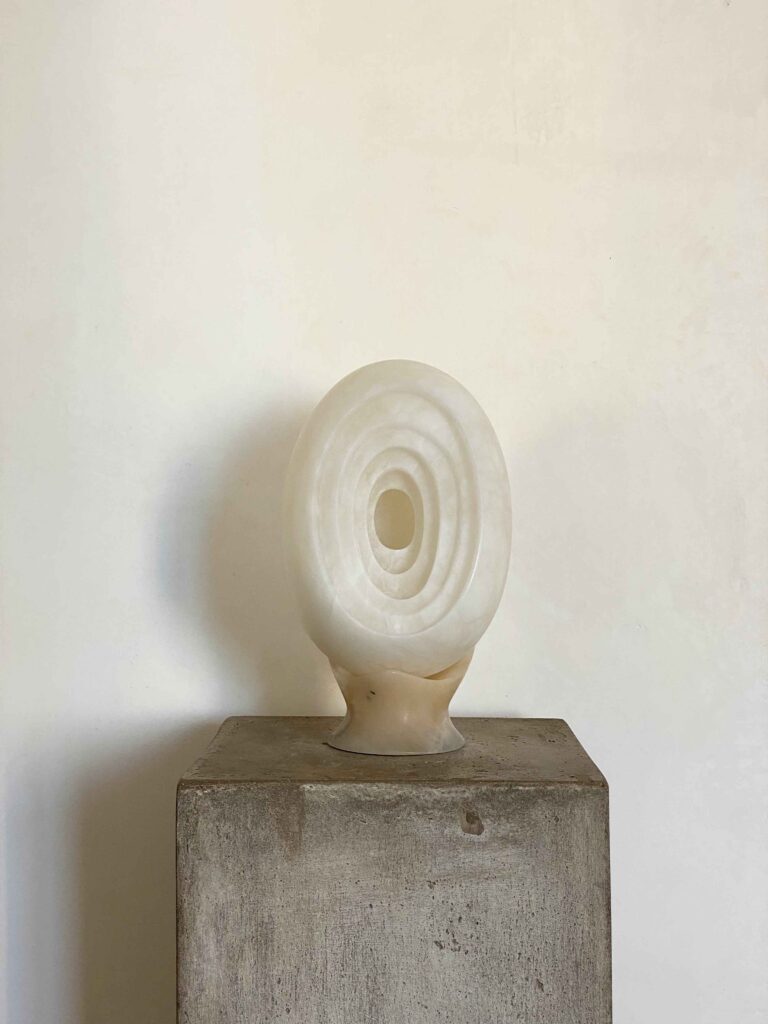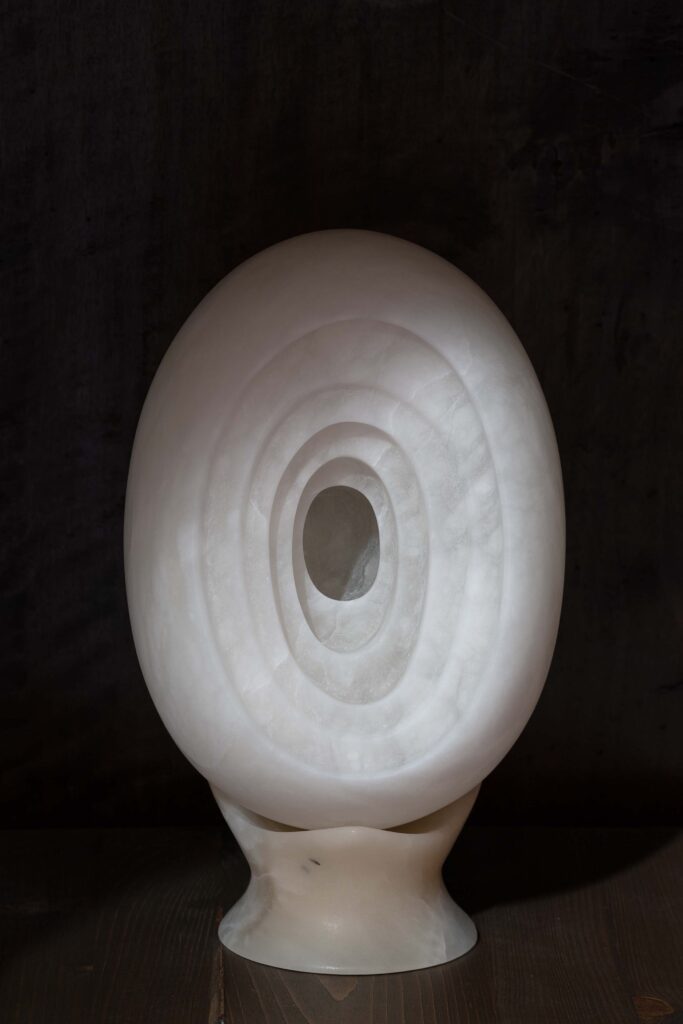Senza voce


Diary


The Senza voce sculpture has been placed inside a confessional. It was inspired by a sketch drawn by the artist who, when focusing her gaze on it, thought of the path of the vibration created by the moving voice.
Stone does not produce a voice, seemingly. Or perhaps it is a voice that you must be able to hear, as theorised by the musicologist Marius Schneider. Nature certainly does but stone too has a sound, a rhythm, as applies to the capitals present in the basilica of San Celso with their fantastic, symbolic animals. Schneider had found a connection between those figures and the Gregorian hymns dedicated to the saints. Here, partly via Nina Carini’s works, I seem to hear those sounds filled with mysticism and spirituality.
Angela Madesani
Sculpture, 2023
Rare white alabaster with no veining, 24 x 17 x 14 cm; base in rare honey-coloured alabaster, 8 10 12 cm